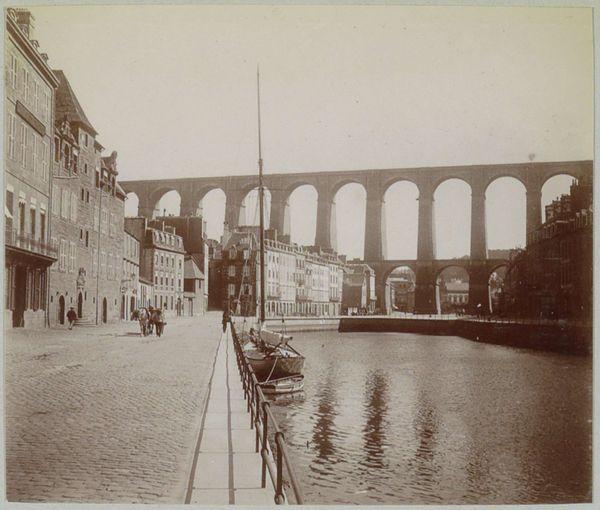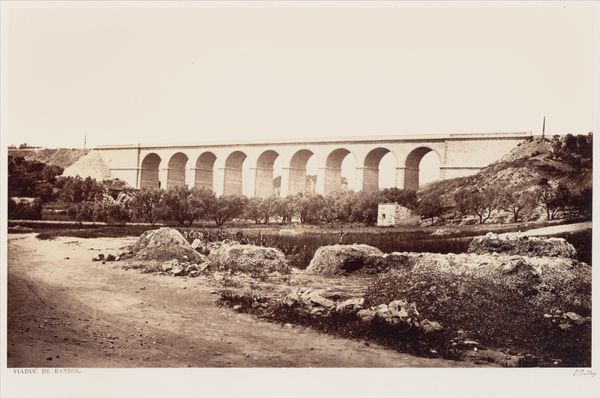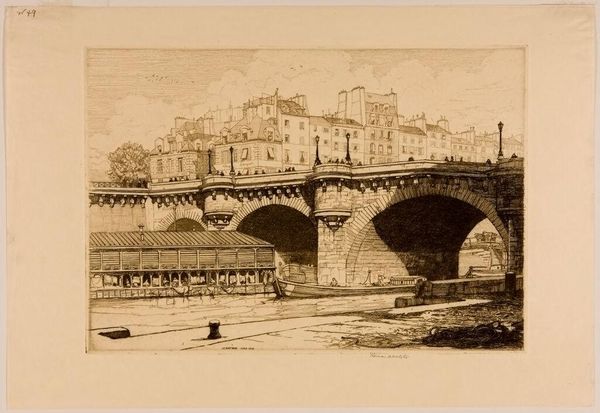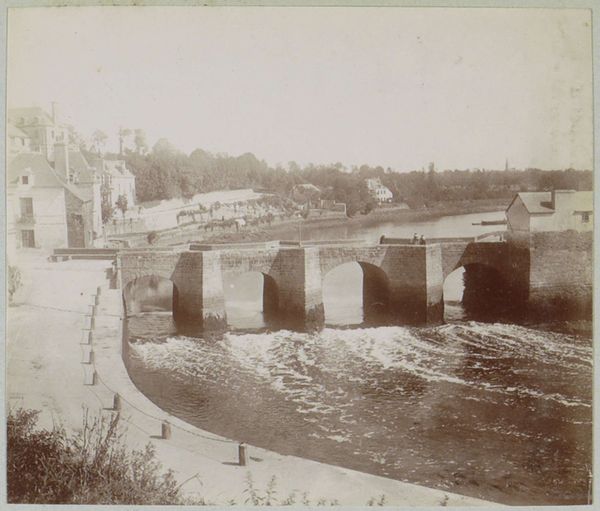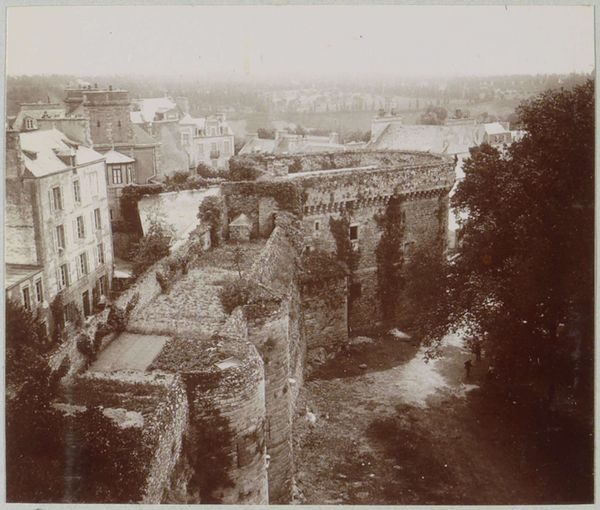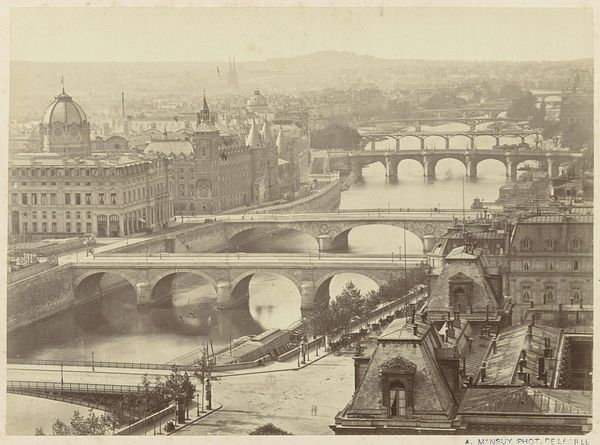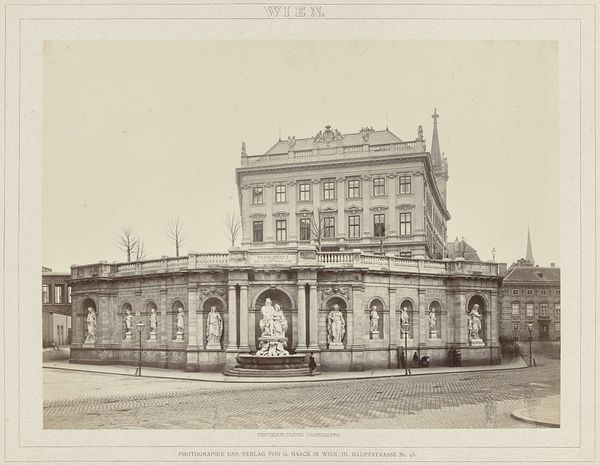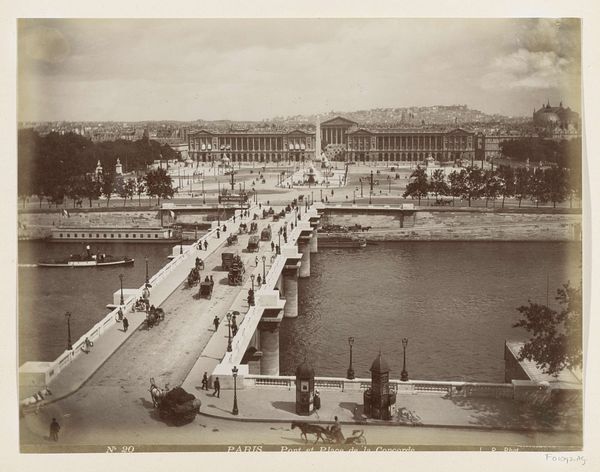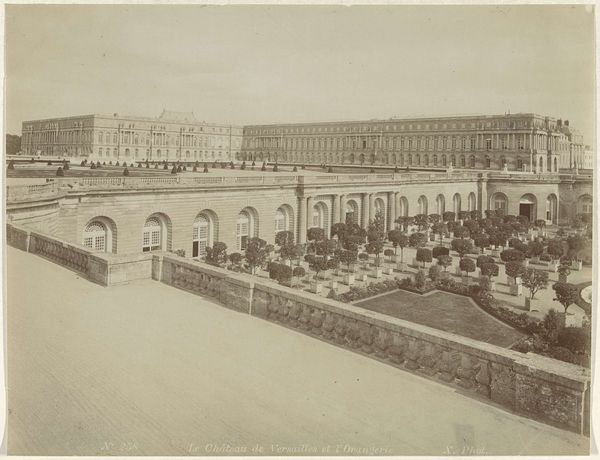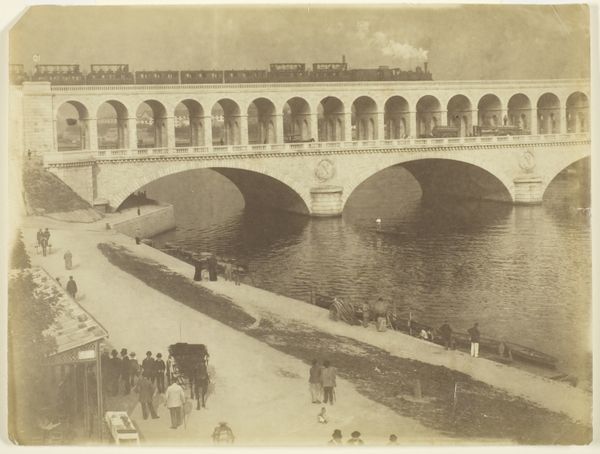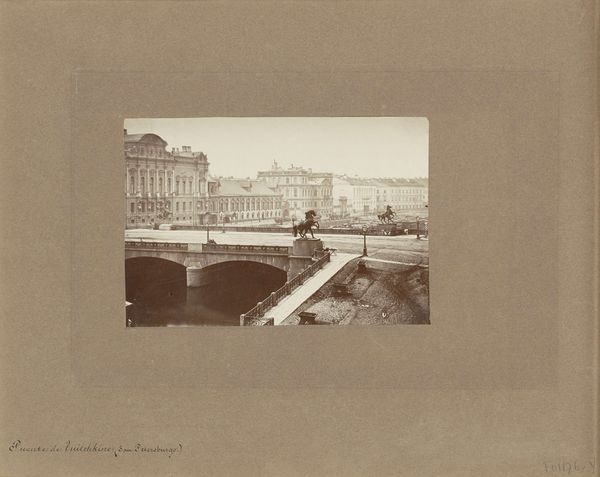
print, photography, gelatin-silver-print
#
pictorialism
# print
#
landscape
#
photography
#
gelatin-silver-print
#
cityscape
Dimensions: height 133 mm, width 203 mm
Copyright: Rijks Museum: Open Domain
Curator: This gelatin silver print, created by James Valentine sometime between 1870 and 1890, offers a serene, if somewhat melancholy, view of the Dean Bridge in Edinburgh. Editor: There’s a stark beauty to it, even through the sepia tones. The way the bridge’s arches dominate the composition, contrasted with the rather haphazard houses clustered underneath… it feels very industrial, almost brutal. Curator: It's an interesting collision, isn't it? The grand engineering of the bridge, built to connect Edinburgh’s New Town, with the pre-existing village below. Think of the social dynamics implied! How did the construction disrupt the existing landscape and daily lives of those villagers? Editor: And who benefitted? Consider the labour. These silver gelatin prints demanded meticulous processing, specialized chemicals and equipment. While Valentine's name is on it as the artist, it represents collective, even hidden, labour within his studio. Did he develop it himself? What were the working conditions? Curator: Precisely. Pictorialism, as a style, tried to elevate photography to the level of fine art. Images like these became ways of promoting a certain vision of modernity and urban progress, packaged and presented to an increasingly photographic public. Editor: I keep returning to the texture here. The stone of the bridge feels heavy, solid. But then you notice the blurry quality in areas - this process could be manipulated by hand during developing; each print would be ever-so-slightly unique, not merely mechanical reproduction. The photograph, then, contains the aura of its own making. Curator: Indeed. The Rijksmuseum is fortunate to hold this view, documenting a specific moment of Edinburgh's transformation—a narrative steeped in ambition and societal change. Editor: Seeing these physical details – the materiality and textures brought to life through light and silver – is the most rewarding way to begin thinking critically about whose history gets represented, and how.
Comments
No comments
Be the first to comment and join the conversation on the ultimate creative platform.

